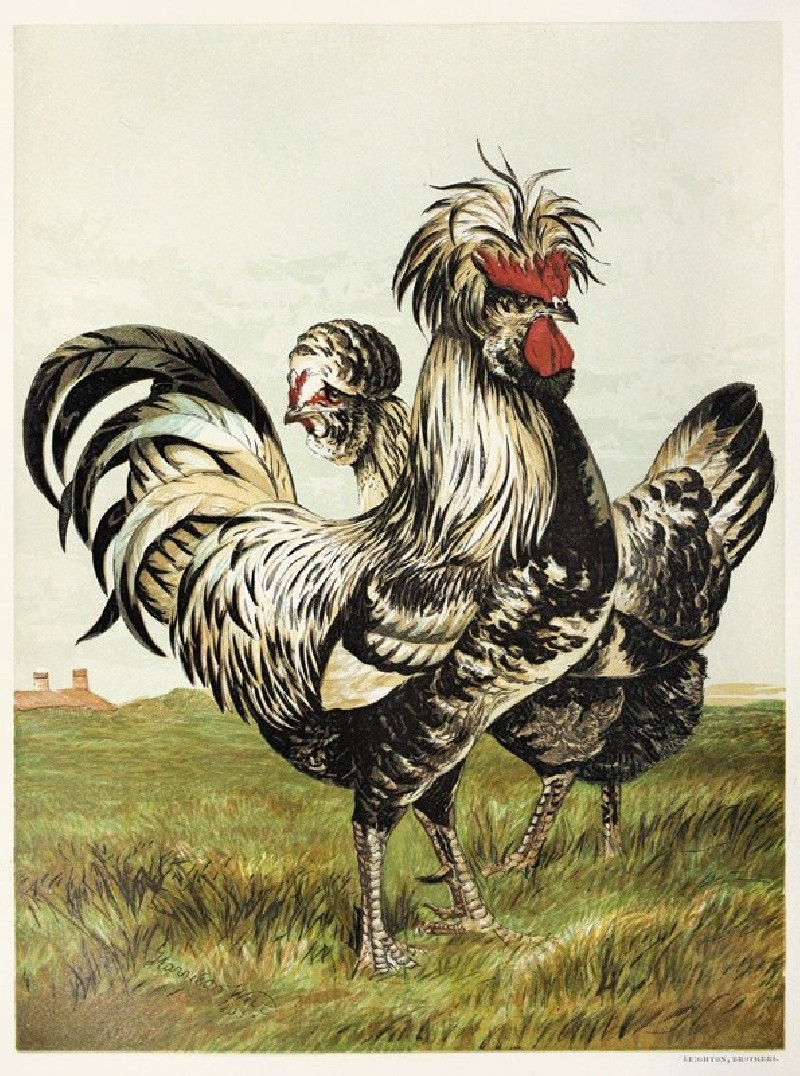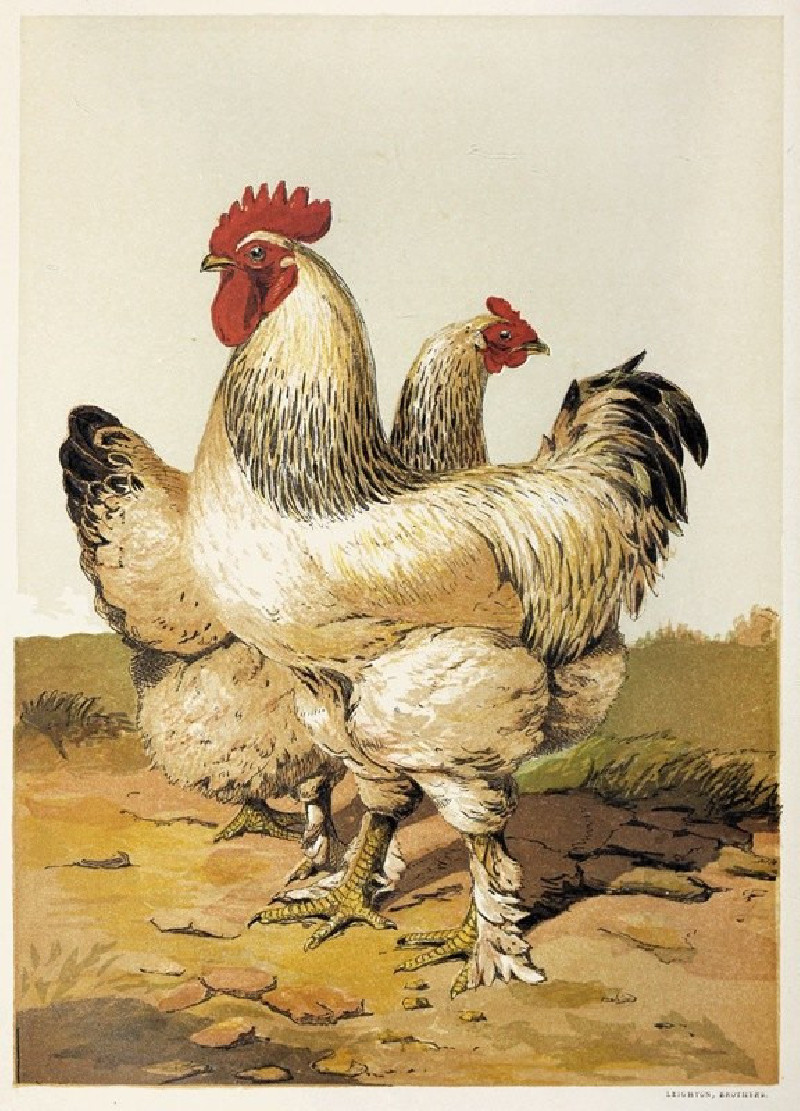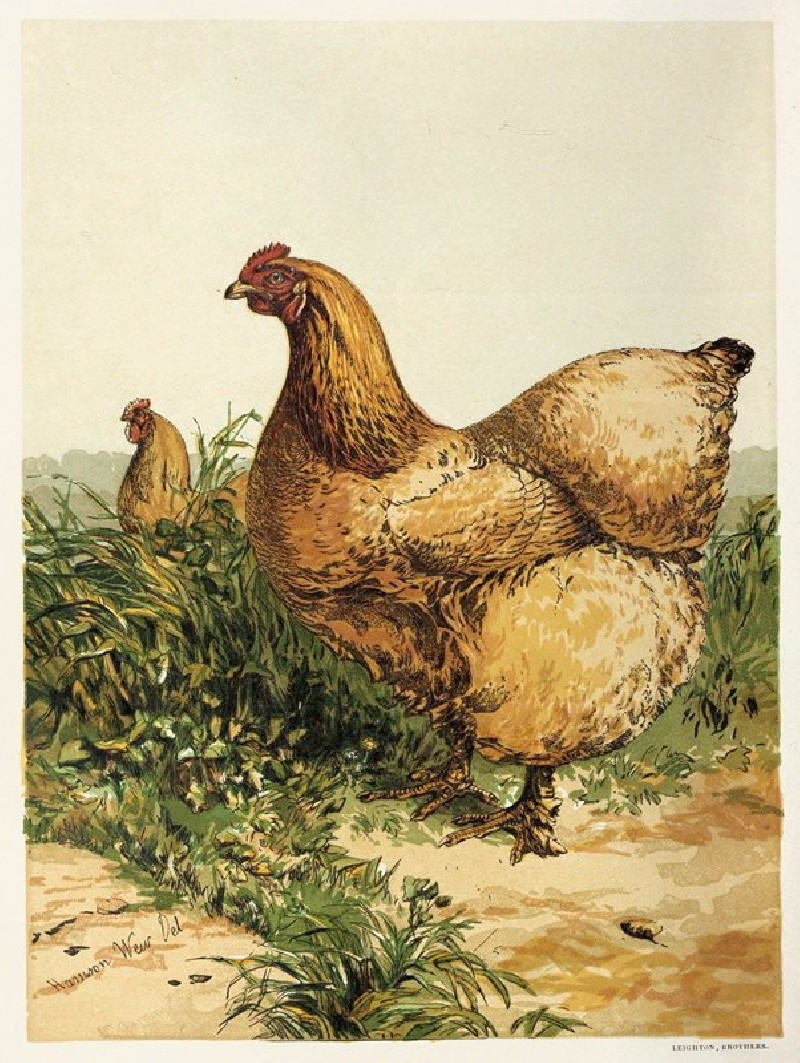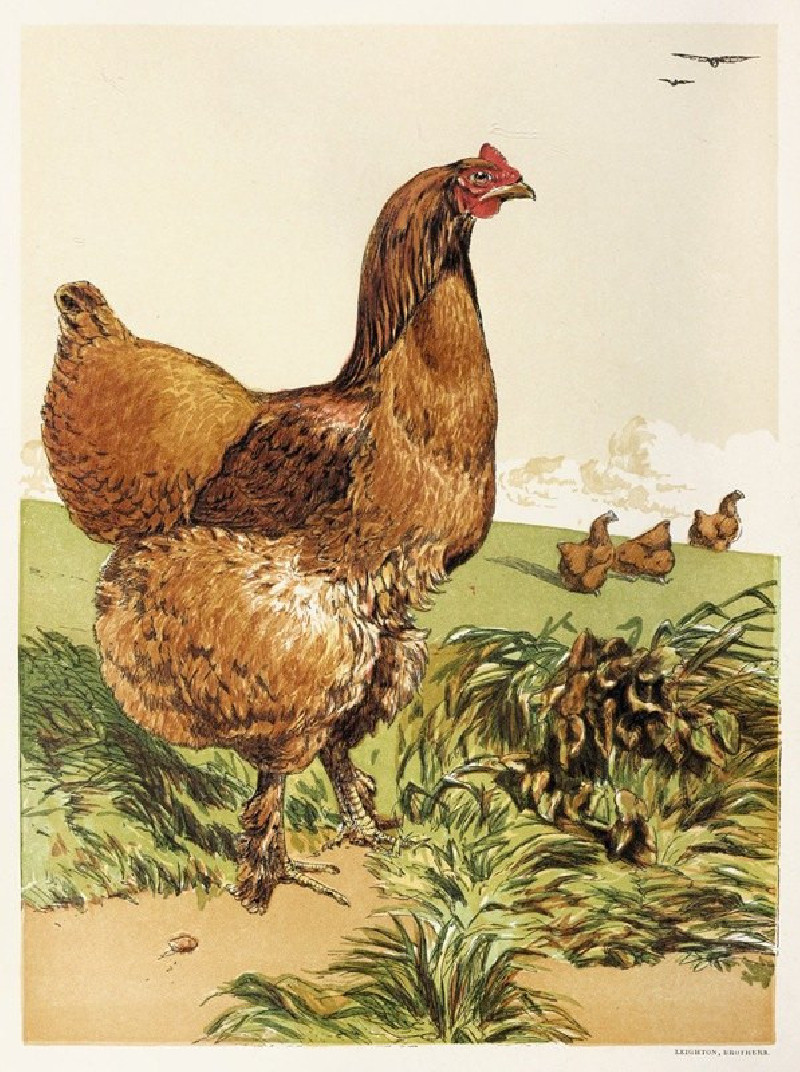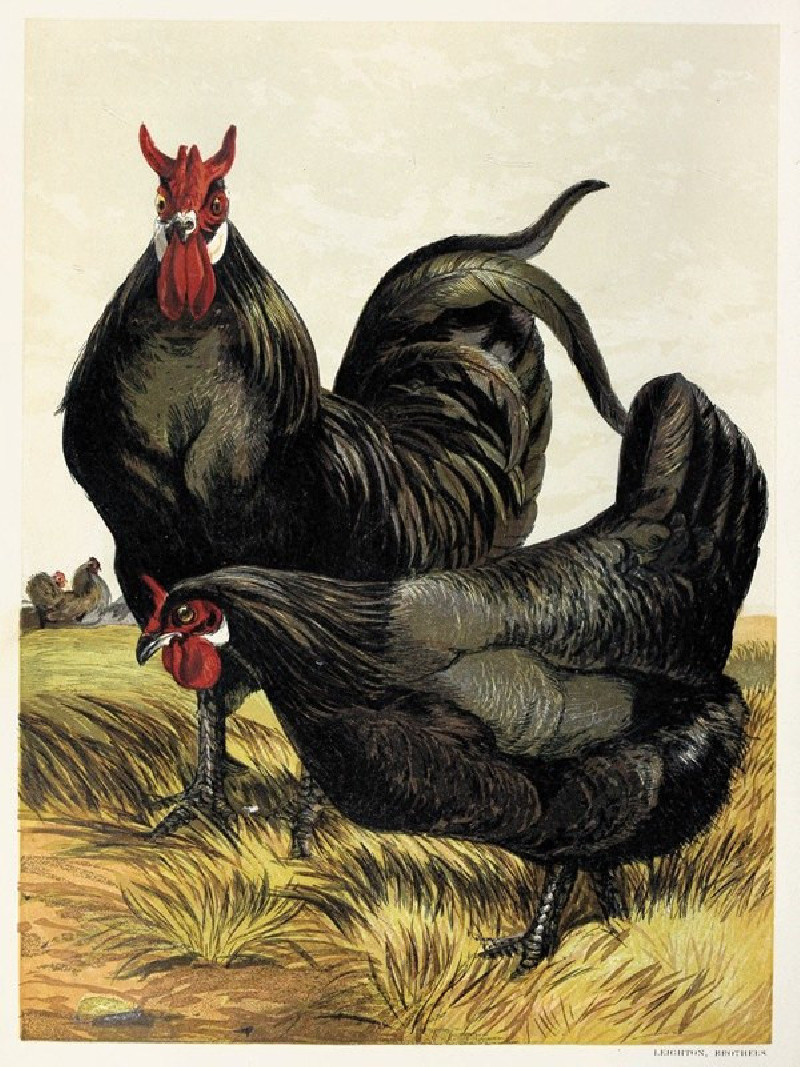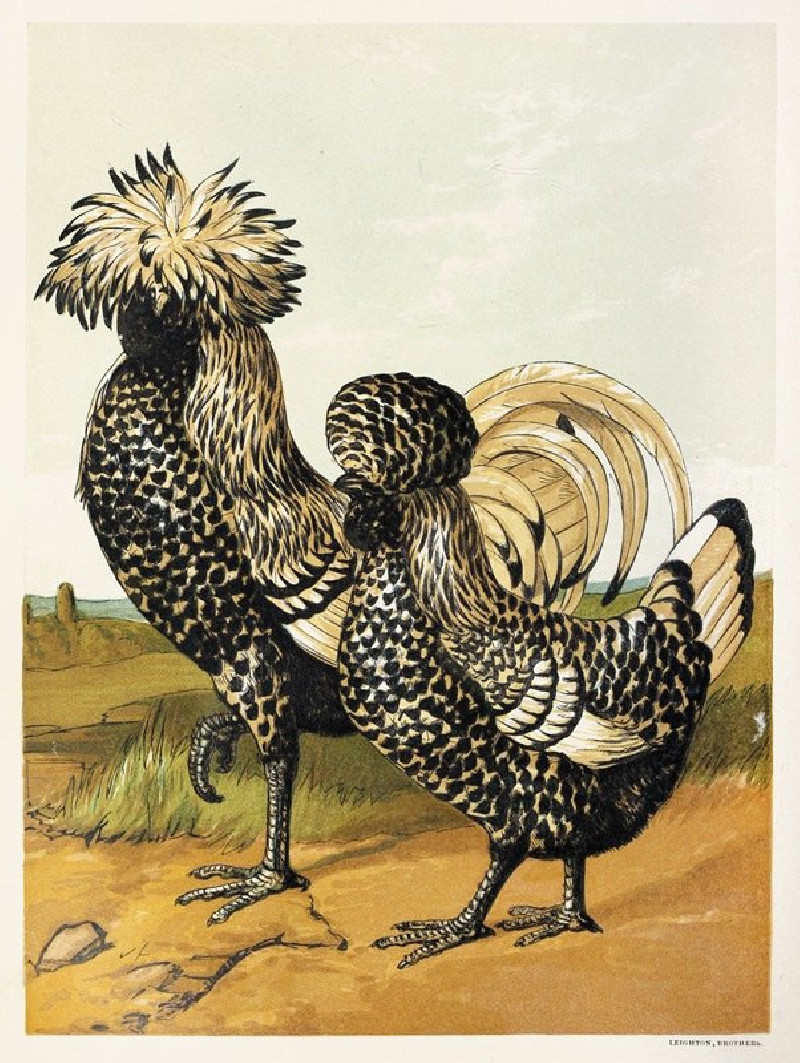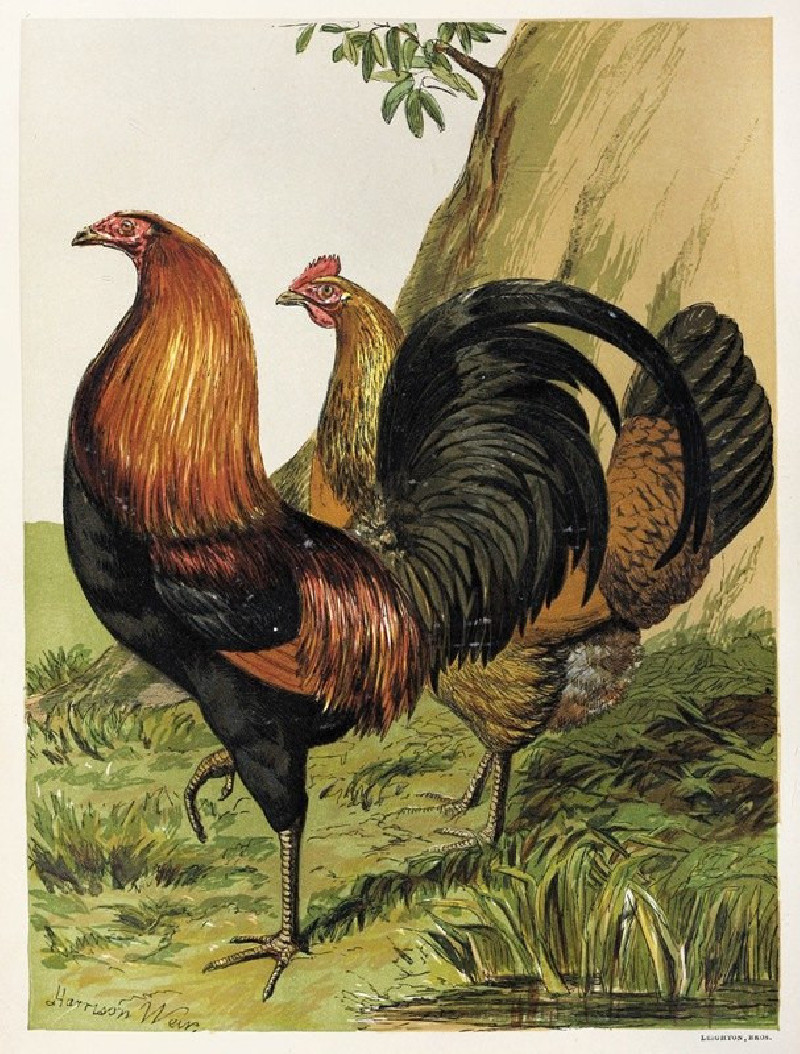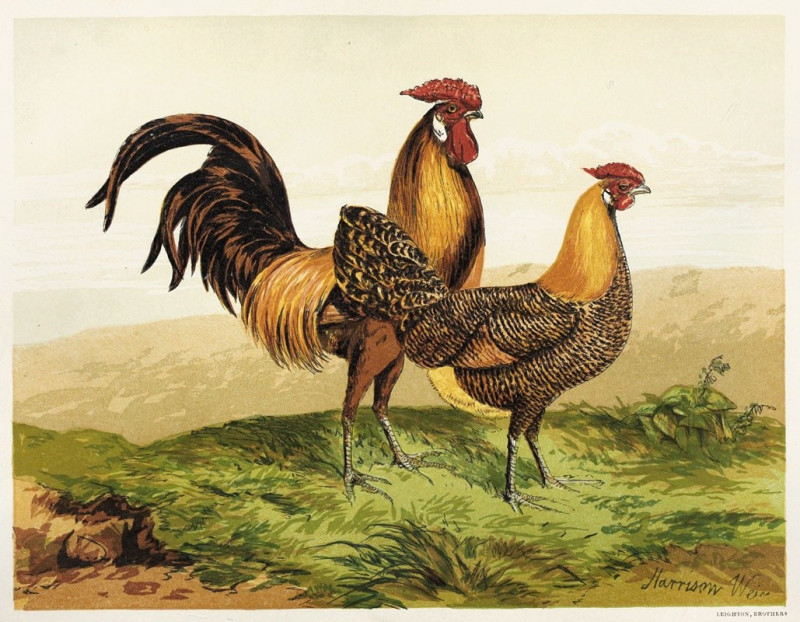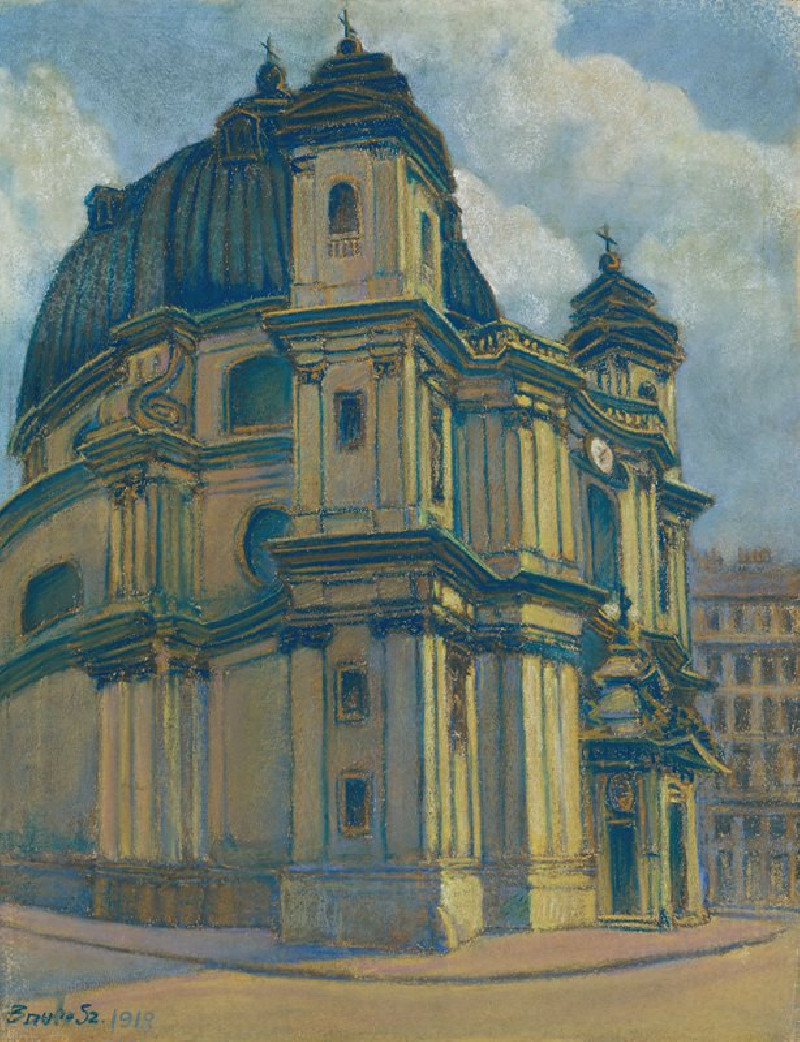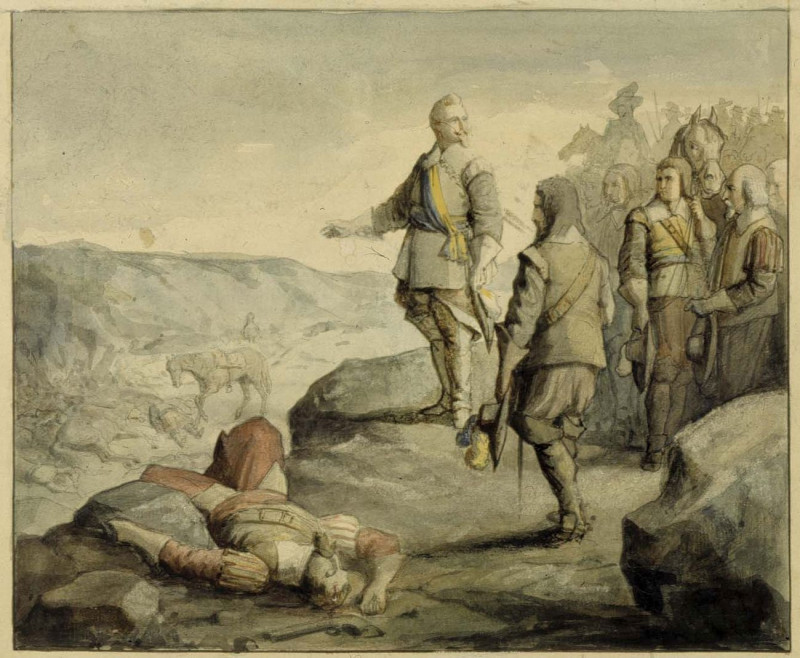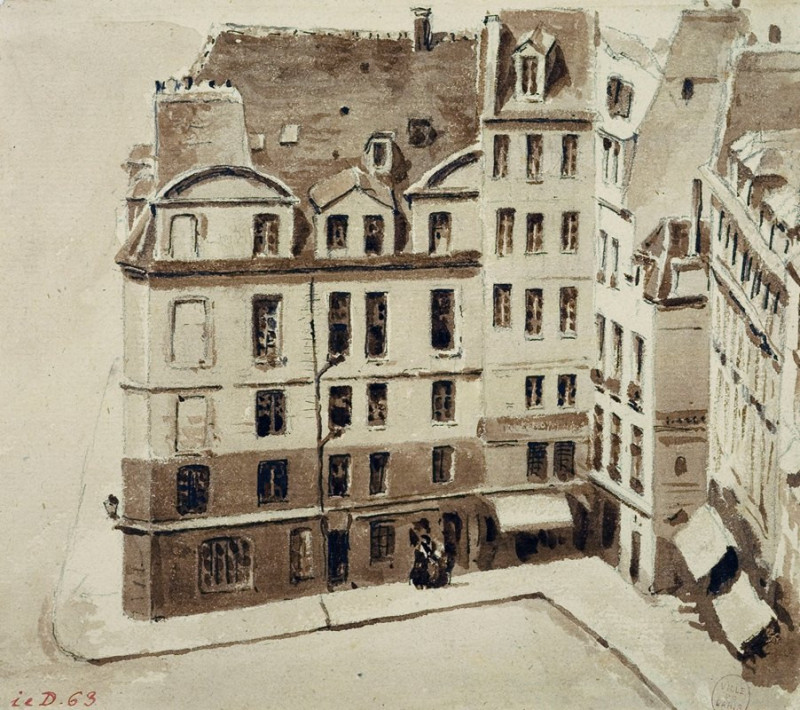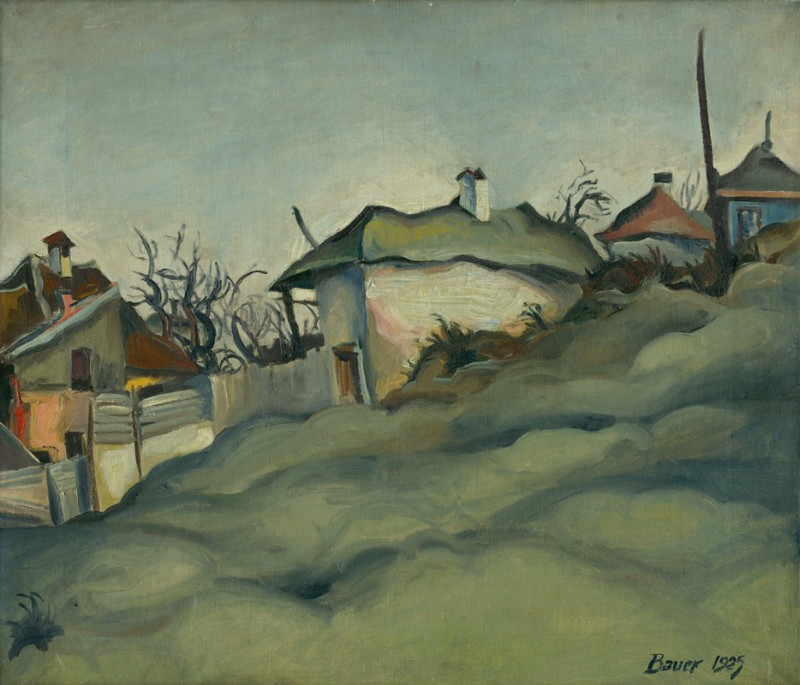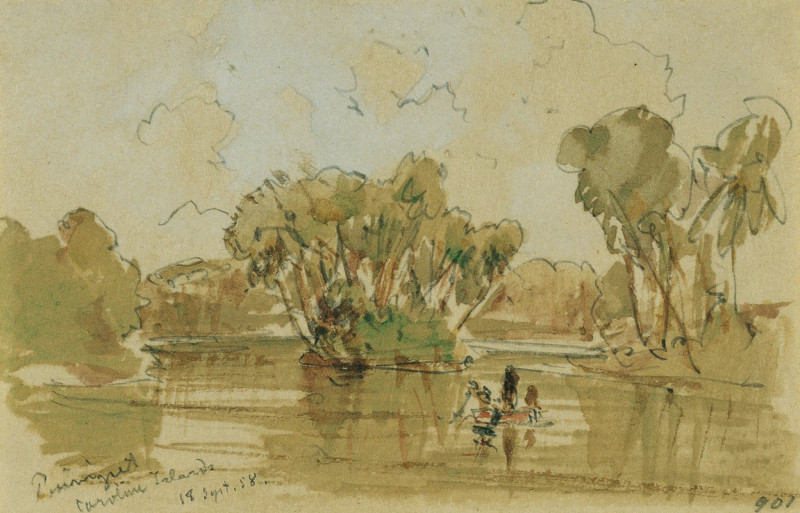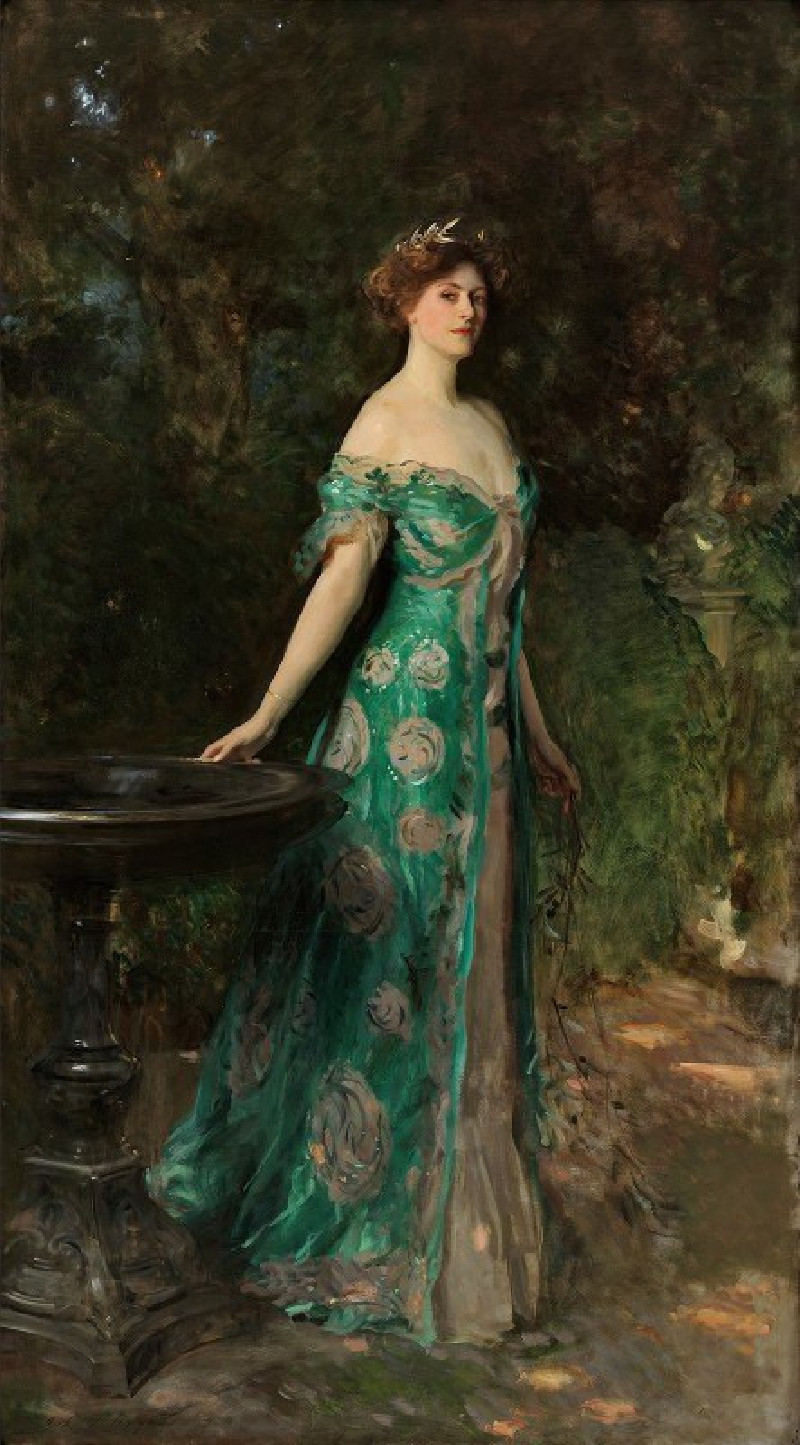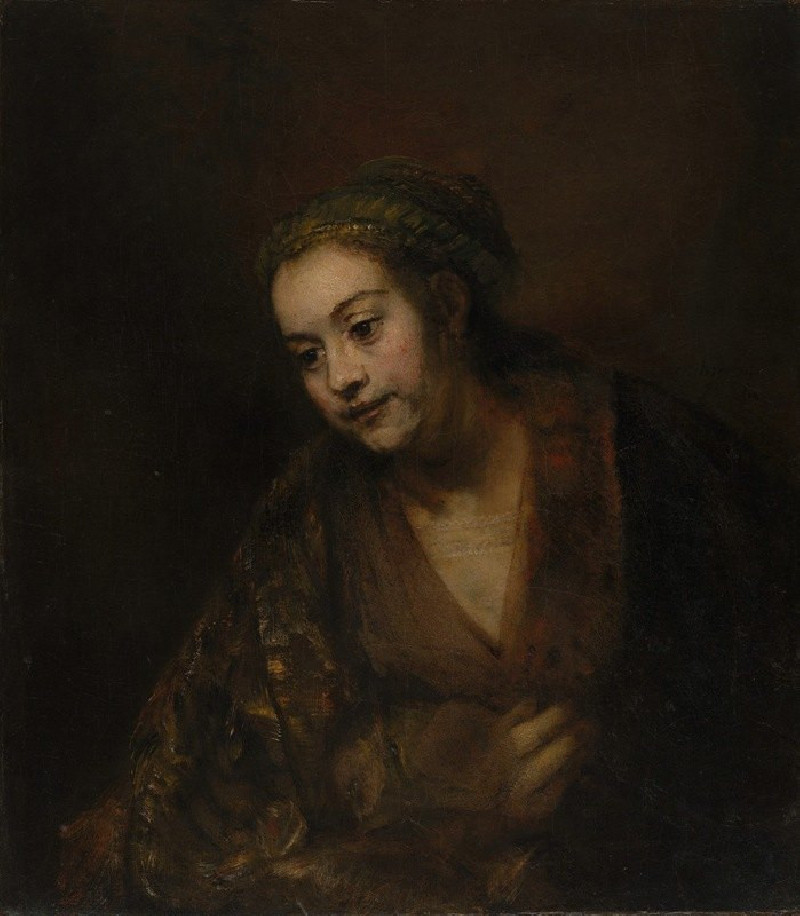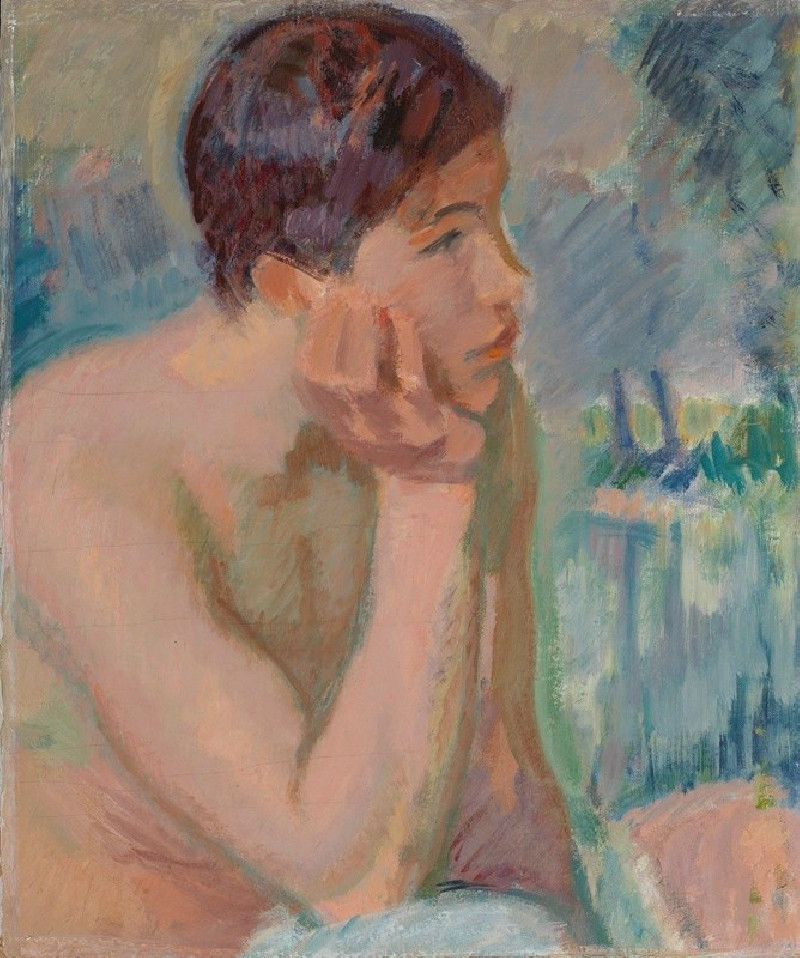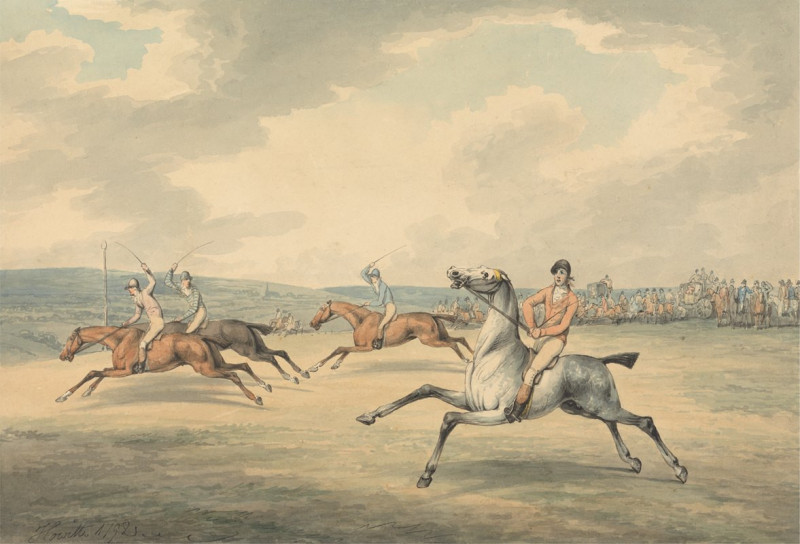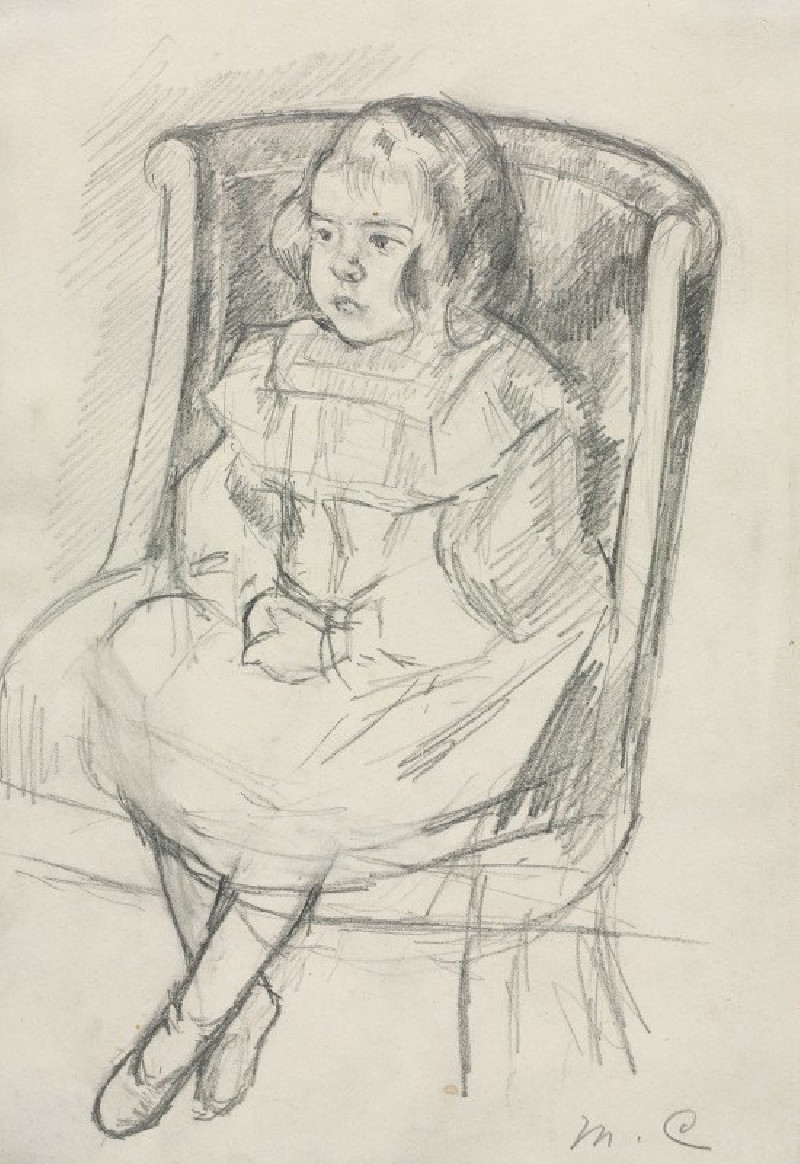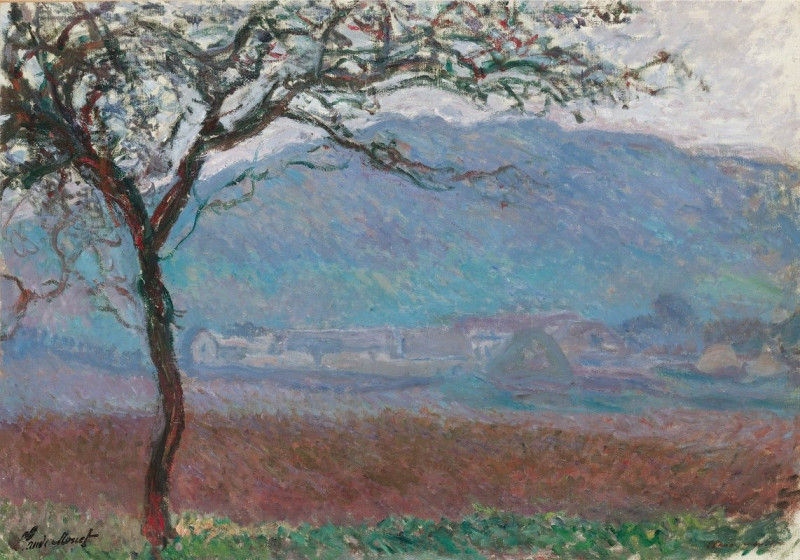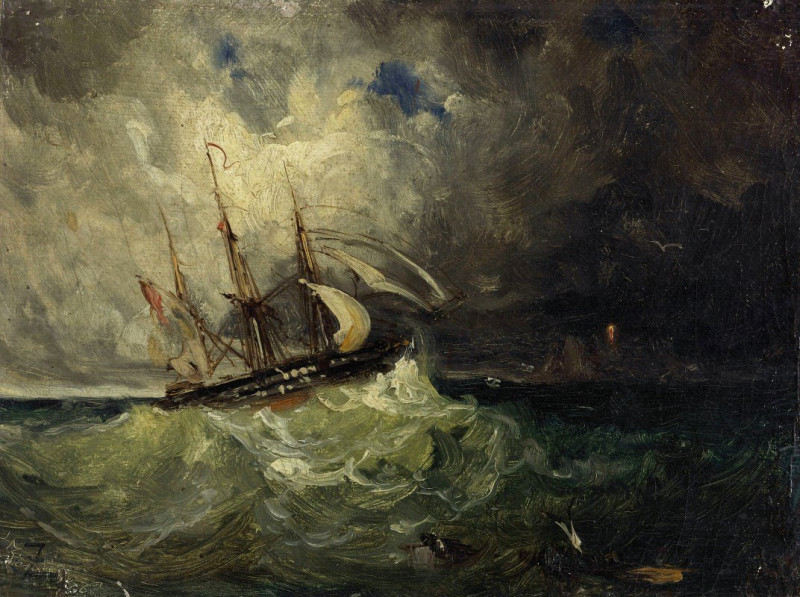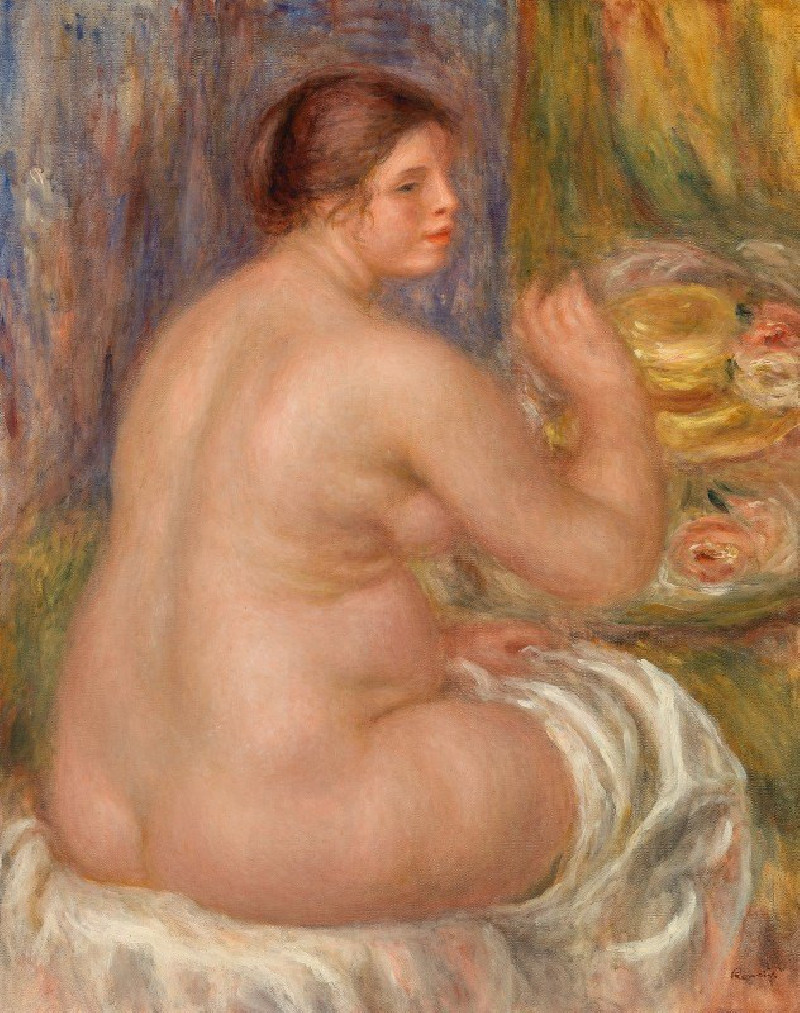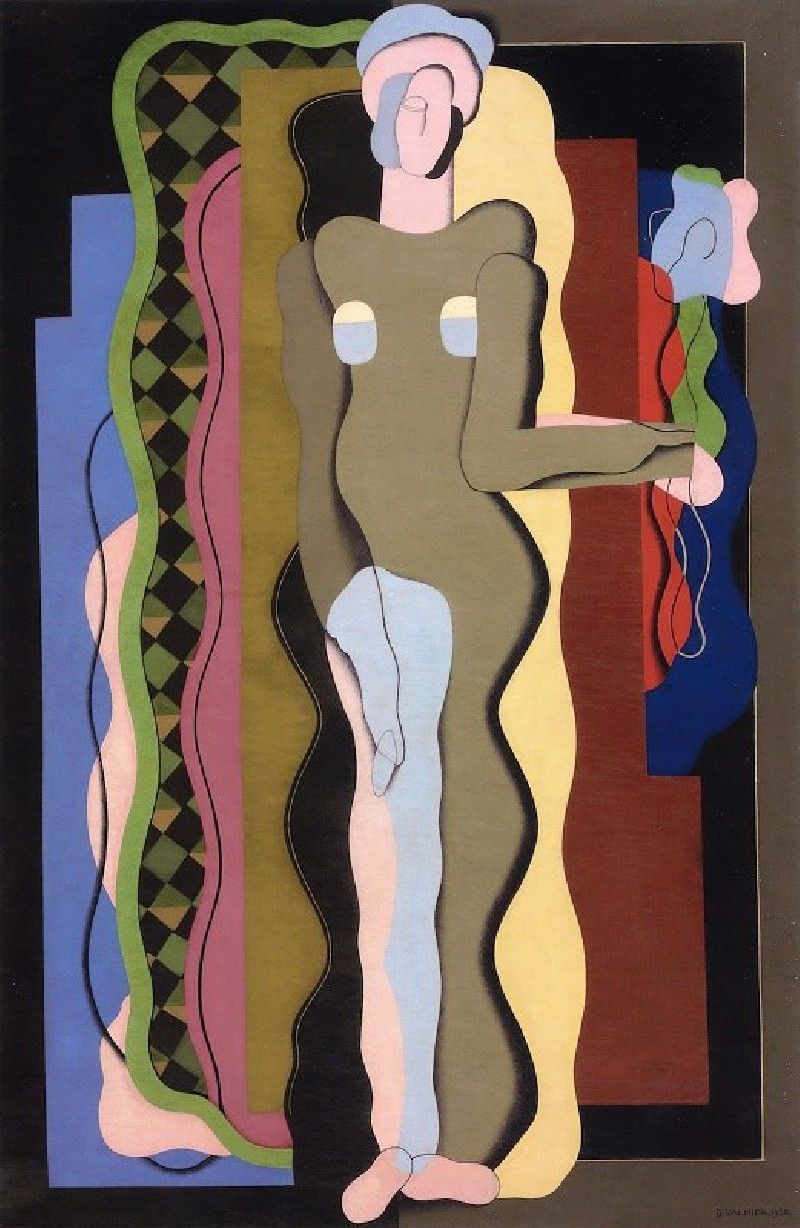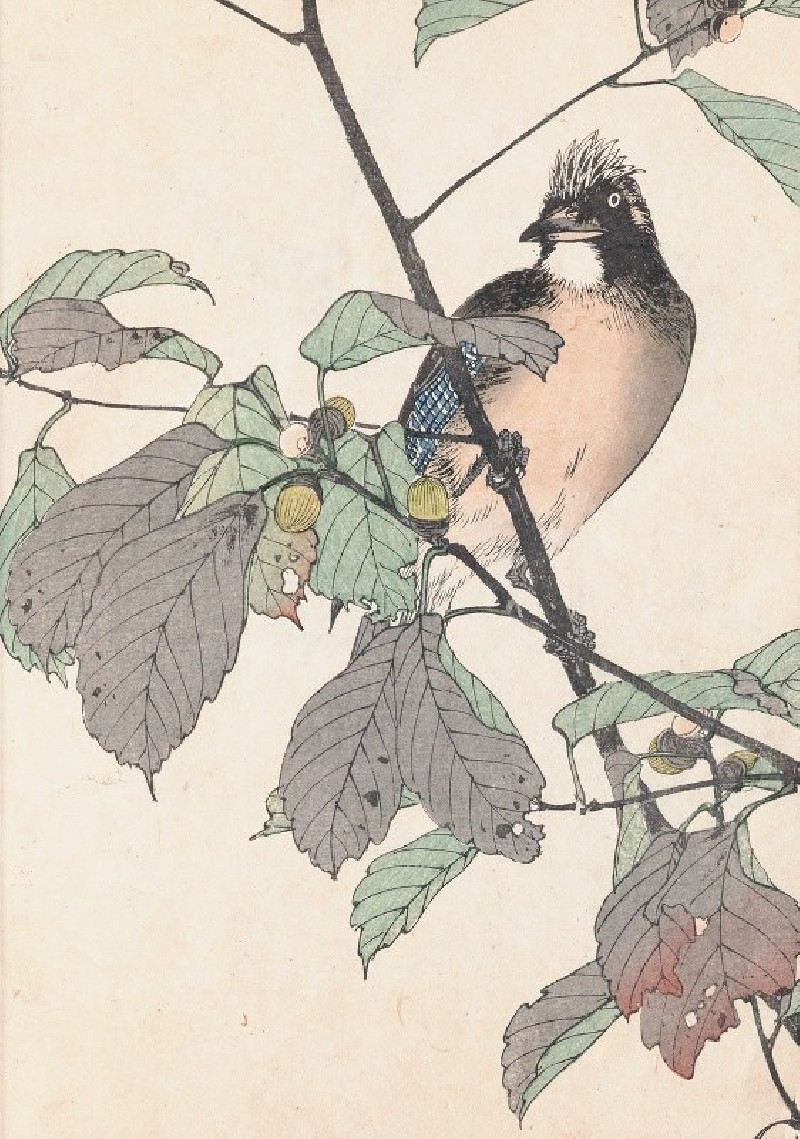Houdans (1867)
Technique: Giclée quality print
Recommended by our customers
More about this artwork
The painting "Houdans" by Harrison Weir, created in 1867, is a striking depiction of two Houdan chickens, a rooster and a hen, set against a pastoral backdrop. This detailed illustration showcases Weir’s skill in capturing the unique characteristics and beauty of poultry, a subject for which he was particularly renowned.In this piece, the Houdan rooster commands attention with its lavish feathering, including a voluminous crest and long, flowing tail feathers that exhibit a mix of black and white patterning. The hen, although slightly more subdued, complements the rooster with similar markings and a curious expression. Both birds are depicted with their distinctive five-toed feet and the fleshy, red facial caruncles that are characteristic of the breed.The background of the painting is subtly rendered, featuring gentle expanses of green fields and a hint of a blue sky, with a distant farmhouse subtly visible. This setting underscores the rural life and natural environment in which these birds thrive.Harrison Weir's "Houdans" not only captures the physical allure of these birds but also invites viewers to appreciate the rural simplicity and the detailed study of nature.
Delivery
Returns
Harrison William Weir (5 May 1824 – 3 January 1906), known as "The Father of the Cat Fancy", was a British artist.
He organised the first cat show in England, at the Crystal Palace, London, in July 1871. He and his brother, John Jenner Weir, both served as judges in the show. In 1887 Harrison Weir founded the National Cat Club and was its first President and Show Manager until his resignation in 1890.

